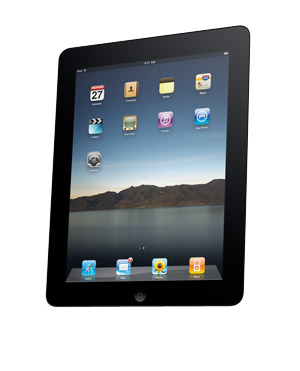Cadenza
Sizing up the iPad
 MCT CAMPUS
MCT CAMPUS The “It” Factor
There’s no getting around it: the iPad makes a good first impression. You unlock the screen (that beautiful, beautiful screen), and you think it can do anything. The touch input has never been more responsive. If you have an iPhone or an Android device, you won’t know what you’re missing until you touch the iPad. You’ll open a photo and pinch-to-zoom because you can. You’ll scroll through Web pages the way Steve Jobs says you want to scroll through Web pages—with two fingers and a dainty physics engine. You’ll be doing so much pinch-zooming and double-tapping that pretty soon you’ll feel like one of those hand models from the commercials.
But as the initial joy wears off, the sheen begins to look an awful lot like many fingerprint smudges on the reflective surface. The big question looms: “Is this a laptop replacement?” The iPad is great for consuming media, but how does it fare in producing it?
The Uncanny Valley
Before we get to those questions, let’s talk some apps. The iPad released with it a litany of applications, many unnecessary—how many Twitter clients does one device need?—and some weirdly necessary. Can you believe the iPad was released without a built-in calculator? Ridiculous!
Then come the cool apps, like iBooks, Apple’s right-hook to Kindle’s jaw. The free app comes packed with Apple’s iBookstore, where the books are sort of the opposite of free. In fact, most of the titles cost more than they would in the Kindle Store, and there aren’t many books under $9.99. Of course, with the extra cost comes a certain premium. iBooks turns out to be a pretty robust e-reader, with a dictionary search function, a bookmark feature and a whole bunch of fonts and text sizes.
In all of its commercials, Apple wants you to realize how cool it is to use your index finger to turn the virtual pages. Wow! Just like a real book! It’s like how when I read books, I can use my finger to turn the pages, because I’m actually using my finger to turn the pages! In fact, if I wanted to use the real-world version of the iBooks’ bookmark feature, I could just use an actual bookmark; instead of using the iPad’s dictionary, I can use the dictionary on my shelf; and if I want a book with large print, I can buy it.
You see where I’m going with this. I already own books. Why would I want to buy something that only seeks to emulate them?
The Trend Continues
In fact, many of the iPad’s features feel like they’re cheap knockoff versions of things I already have. The iPad has a 9.7-inch screen. My MacBook Pro has a 15-inch screen. The iPad has Safari and so does my Mac, but I also have Flash, and the iPad does not. The iPad’s touch keyboard is admirable, but it’s nowhere near as fast and accurate as a physical keyboard, especially when it’s in portrait.
Students who want to use the iPad like a laptop—as a productivity device—are similarly out of luck. It’s easy and fun to watch a movie, listen to music or race a quick lap of “Need for Speed” on an iPad, but it’s difficult to use the downloadable ($9.99 each) Pages, Numbers and Keynote, the iWork suite optimized for iPad. For starters, Numbers can’t even export to Excel, which is a bummer considering that every computer on campus runs Excel, not Numbers.
Furthermore, the programs are hard to navigate. You will feel lost when you try to start a new project in Keynote or adjust a table in Numbers. You’ll poke and prod wildly, pinch-zooming here and double-tapping there, hoping for the right sub-menu to pop up. After fiddling with the iPad for 20 minutes, I realized that all I really wanted was a task bar at the top of the screen.
If Apple is really dedicated to making a tablet computer that only has one button to return the user to the home screen, they have to make the software more intuitive. As it stands, some of the execution borders on disastrous, and that’s not what you expect out of an Apple product.
The old saying goes, “Never buy a first-generation Apple product,” and it couldn’t apply more to the iPad. The iPad is a neat concept, but right now, we should keep our money in our wallets and let the tablet incubate for another year or two.
